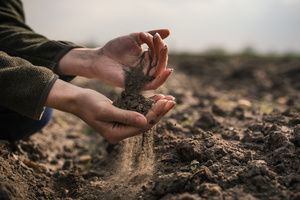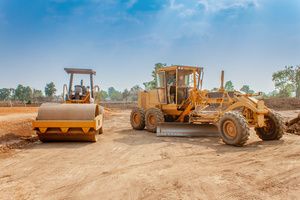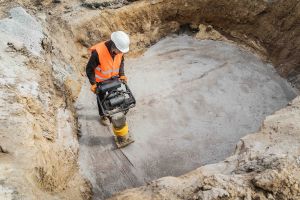Before any type of construction can get underway, the soil on the property must be properly compacted. The dirt compaction process densifies soil by reducing the amount of air between its particles by pressing the particles together to eliminate space.
The benefits of soil compaction are numerous. It will reduce the chances that a building or roadway will settle after it has been built, which could lead to expensive repairs. It also provides a strong platform foundation and enables the soil to better support whatever is built on top of it.
However, compaction is not a straightforward process, and it must be carried out with extreme care. Here are seven tips for effective dirt compaction.
Understand Your Soil Type

Before you can begin compacting your soil, it is important to understand the type of soil that you will be working with. Every type of soil has a specific maximum density as well as an optimum moisture level that you will need to know when you are compacting it. While cohesive soils (like clay) and granular soils (like sand) can be compacted, organic soils do not lend themselves well to compaction.
Clay soil will feel lumpy when you touch it. When wet, clay becomes quite sticky, but it is rock hard when it’s dry. This is one of the best soils for compaction. Sandy soil can also be compacted. This type of soil feels gritty, dries out quickly and drains easily. Silty soil, which has a very soft feel and holds moisture well, can also be compacted.
Determine the Moisture Content
Make sure that you compact your dirt when its moisture content is ideal. When you attempt to compact soil that is too dry, it will not compact well-while compacting soil that is too moist will weaken its stability.
You can use a hand test to determine the moisture content of your soil. Simply grab a handful of soil and squeeze it between your hand. Then, when you open your hand you need to observe its characteristics.
Ideally, it will be moldable when you squeeze it and then break into a couple of pieces when you drop it. If it shatters when you drop it, and it is powdery, it means that your soil is too dry. If it stays in a single piece when you drop it and leaves moisture on your hand, that means your soil is too moist to properly compact.
Use the Right Dirt Compaction Equipment
To compact dirt, you will need a machine that uses vibratory force, such as an oscillating or vibratory roller. These machines work by applying a quick series of blows to the soil’s surface. This impacts the layers below it and facilitates the process.
Keep in mind that when you use a non-vibratory roller, the amount of compaction that you can achieve will depend on the machine’s weight, with heavier machines compacting dirt more effectively.
If you are working with cohesive soil, you will want to use a pad-foot roller-while vibratory rollers are ideal for granular soils.
Prevent Rollovers

When working with rollers and compactors on surfaces that are not perfectly even, there is a greater risk of rollover. Therefore, you should inspect your work surfaces for any dangerous declines or inclines before work gets underway. If you must work with a surface that is not perfectly flat, look for a machine that is equipped with rollover protective structures and seat belts to help reduce your risk of injury.
You should also check the tire pressure before you operate these machines-insufficiently inflated tires can destabilize your compacting machine. You will also need to take care when you are compacting soft edges as this can cause one side of your compacting machine to sink and raise the risk of rollover.
Avoid Overcompaction
It is important to remember that although compacting soil is vital before you construct something on top of it, it is possible to compact soil too much if you make too many passes in the same direction with the compaction machine. In addition to reducing your soil density, this is not an efficient use of your time and can wear out the machine.
At the same time, you want to make sure that you are compacting your soil enough; undercompaction will leave the soil’s particles too soft and prevent them from gaining the cohesion needed to generate the ideal amount of density for your project.
Pay Attention to the Lift
When filling a trench, it is important to ensure you are using the right amount of dirt and sufficient compaction force. The vibratory impact decreases as soil becomes more compacted, returning greater energy to the machine. As a result, it may come higher off the ground as you continue to compact the soil. Improper lift may result in the formation of a loose layer of dirt and undercompaction.
Hire Professionals Who Can Do the Job Safely and Effectively
Although compacting soil may sound easy if you have access to the right equipment, it is actually far more complicated than it sounds and requires significant experience-not only to operate machines effectively, but determine when the perfect degree of compaction has been reached without overcompacting or undercompacting it.
This is particularly important when you are compacting dirt that will have a structure placed or built on top of it as the entire structure could be in jeopardy if the underlying soil has not been compacted properly. This can endanger not only the structure but also people and pets nearby. Therefore, it is best to find a contractor with proven experience in compacting dirt and access to the right equipment so you can be assured the job is being conducted safely.
Contact the Soil Compaction Experts at Dirt Connections
The professionals at Dirt Connections can help you find the right soil for your residential or commercial project, deliver it to your site, and grade and compact it to your specifications. Contact us today to learn more about our services.
Summary

Dirt Connections was started with one goal in mind: providing quality residential and commercial construction services to clients on time and on budget. Reach out for more information on how we can support your next project.
For your convenience our estimates are free and by appointment. Call 703-940-9949 for a free estimate today!










































